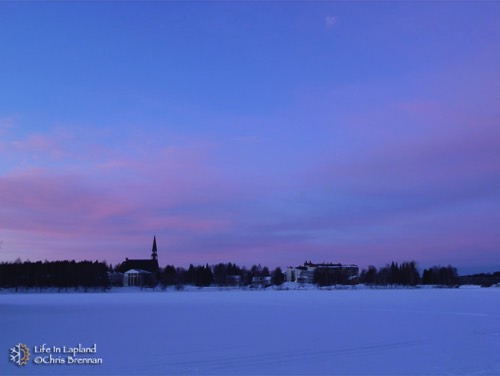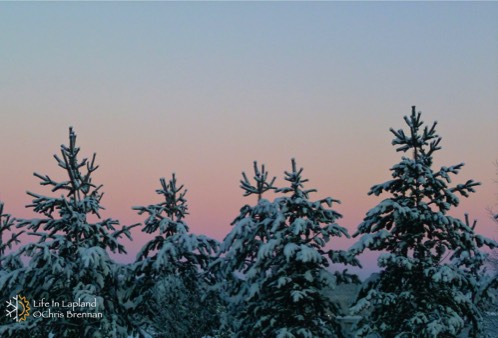The Polar Night ('Kaamos') Explained

The polar night, called 'Kaamos' in Finnish, happens when regions inside the polar circles (Arctic Circle and Antarctic Circle) endure periods of darkness that lasts up to 24 hours in a day. That's right, an entire day without sunlight. It’s essentially the opposite of the midnight sun phenomena in summertime, where the sun is above the horizon for up to 24 hours.
This period of darkness generally begins around December as the Winter equinox approaches and will last into January, in the beginning weeks after the winter equinox has passed. However, the amount of darkness experienced depends on the latitude of a location. In places closer to the poles, say for example Svalbard, a 24 hour period will be completely dark, but regions further out toward the circles, for example Rovaniemi, will experience more so a polar twilight rather than extreme darkness of polar night that happens in Utsjoki.
In a polar twilight, the sun can be visible during the day, yet the period in which it is above the horizon is quite short, which can be as little as 2 hours. As the sun descends below the horizon in these places closer to the polar circles, the sky reveals some amazing colors, often different shades of blue or violet or magenta and in Lapland, this is often referred to simply as the ‘blue moment’ of the day, rather than the beginning of polar ‘twilight’ or ‘night’. So ‘Kaamos’ can refer to both the polar night as well as this ‘blue moment’ period of the year. These colors can often be seen already in November.
Its quite easy to view the blue moment throughout all of Lapland, and it makes for some excellent photo opportunities during the afternoon ‘sunset’. Here are few examples of some of the colors that can be seen below.
This period of darkness generally begins around December as the Winter equinox approaches and will last into January, in the beginning weeks after the winter equinox has passed. However, the amount of darkness experienced depends on the latitude of a location. In places closer to the poles, say for example Svalbard, a 24 hour period will be completely dark, but regions further out toward the circles, for example Rovaniemi, will experience more so a polar twilight rather than extreme darkness of polar night that happens in Utsjoki.
In a polar twilight, the sun can be visible during the day, yet the period in which it is above the horizon is quite short, which can be as little as 2 hours. As the sun descends below the horizon in these places closer to the polar circles, the sky reveals some amazing colors, often different shades of blue or violet or magenta and in Lapland, this is often referred to simply as the ‘blue moment’ of the day, rather than the beginning of polar ‘twilight’ or ‘night’. So ‘Kaamos’ can refer to both the polar night as well as this ‘blue moment’ period of the year. These colors can often be seen already in November.
Its quite easy to view the blue moment throughout all of Lapland, and it makes for some excellent photo opportunities during the afternoon ‘sunset’. Here are few examples of some of the colors that can be seen below.


If you google 'Kaamos', don't be surprised if a variety of other results come up as its also the name of a Finnish rock band from the 1970's.
Some other exciting natural phenomena to observe when visiting Lapland include viewing the northern lights, midnight sun, sun dogs, moon dogs, or autumn colors of ruska.
Some other exciting natural phenomena to observe when visiting Lapland include viewing the northern lights, midnight sun, sun dogs, moon dogs, or autumn colors of ruska.